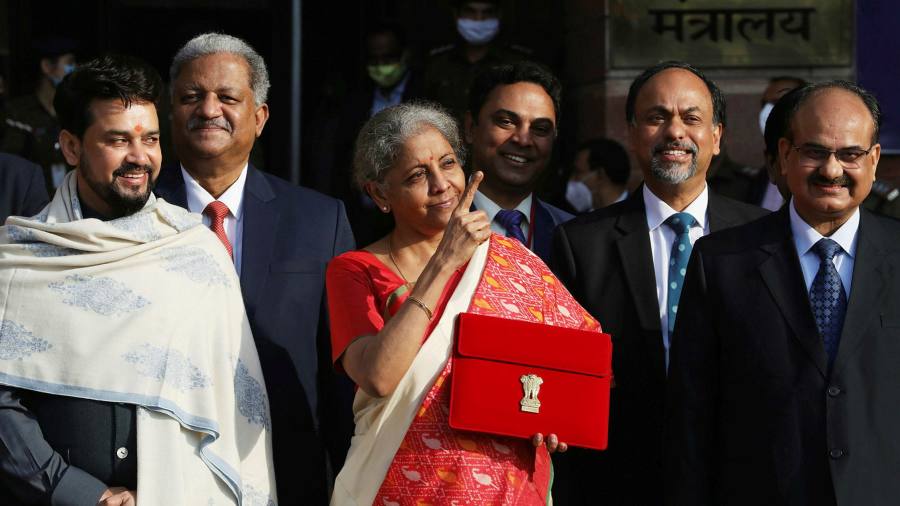[ad_1]
India is abandoning its fiscal restraint as it prepares to step up capital investment and implement financial sector reforms to support its battered economy after a pandemic-induced contraction.
The Bombay Stock Exchange’s Sensex Index rallied on Monday with a 5 per cent rise, after finance minister Nirmala Sitharaman announced plans for higher government spending, bank privatisation, liberalisation of the insurance sector and protective tariff increases over the next financial year.Â
Ms Sitharaman said New Delhi planned to borrow an additional $11bn from the financial markets over the next two months to fund a final capital spending push before the fiscal year ends on March 31.
New Delhi, she said, would end the year with a fiscal deficit of 9.5 per cent of gross domestic product — far higher than previously expected, and far above the 3.5 per cent that was targeted for the year in February last year — before the pandemic hit India.
The fiscal push follows concerns that New Delhi had been too restrained in its pandemic response, because of fears of a rating agency downgrade, although Ms Sitharaman denied that Prime Minister Narendra Modi’s government had been overly cautious. The IMF and the World Bank in October urged richer countries to spend their way out of the pandemic.
“Everyone was advising us, ‘please spend more’,†Ms Sitharaman said in a press conference after unveiling the budget. “We have spent, and we have spent and we have spent. Otherwise, your fiscal deficit would not have reached that number.â€Â
For the next financial year, starting April 1, New Delhi is targeting a fiscal deficit of 6.8 per cent of GDP, as it increases capital spending to $75bn, up nearly a third over last year.
That includes plans to spend $13bn on roads in West Bengal, where Mr Modi’s ruling Bharatiya Janata Party hopes to oust the current state administration in elections due this year, and $15bn for railway development.
Ms Sitharaman said the government had laid out a “fiscal glide path†that will see the deficit cut to about 4.5 per cent by the 2025-26 financial year.
But analysts said the budget represented a decisive policy shift.
“Up until now it has been quite clear to me that they were worried about losing their investment grade rating on sovereign debt,†said Shilan Shah, of Capital Economics. “But the [finance ministry] seems to have changed tack now. Rather than just trying to show prudence, it’s trying to support the economy, which is one way of improving the public debt trajectory.â€
However, analysts warn the fiscal expansionism also risks stoking inflation, as it comes with recovery already under way.
India’s GDP contracted 24 per cent year on year in the April to June quarter, when economic activities were restricted by a strict coronavirus lockdown. But as restrictions have eased, the economy has been bouncing back, with manufacturing activity now back to pre-pandemic levels, according to IHS Markit, although services still lag behind.
The IMF has projected that India’s GDP will grow about 11 per cent in 2021, recovering to is pre-pandemic level, after an 8 per cent contraction in 2020.
Saurabh Mukherjea, chief executive of Marcellus Investment Managers, said the expansionary policies “will stimulate the economy no question about it — the concern is will it stoke inflation. You could end up overheating things in the next 12 months.â€
In addition to the stimulus, Ms Sitharaman announced plans for financial sector reforms, including raising the cap on foreign direct investment in the insurance sector to 79 per cent, up from the previous 49 per cent, and plans to privatise two state banks.
The government plans to establish a special asset management company to tackle the bad debts now weighing down on state banks, and is increasing tariffs on a clutch of items made by small and medium-sized domestic enterprises to shield them from competition.
[ad_2]
Source link





